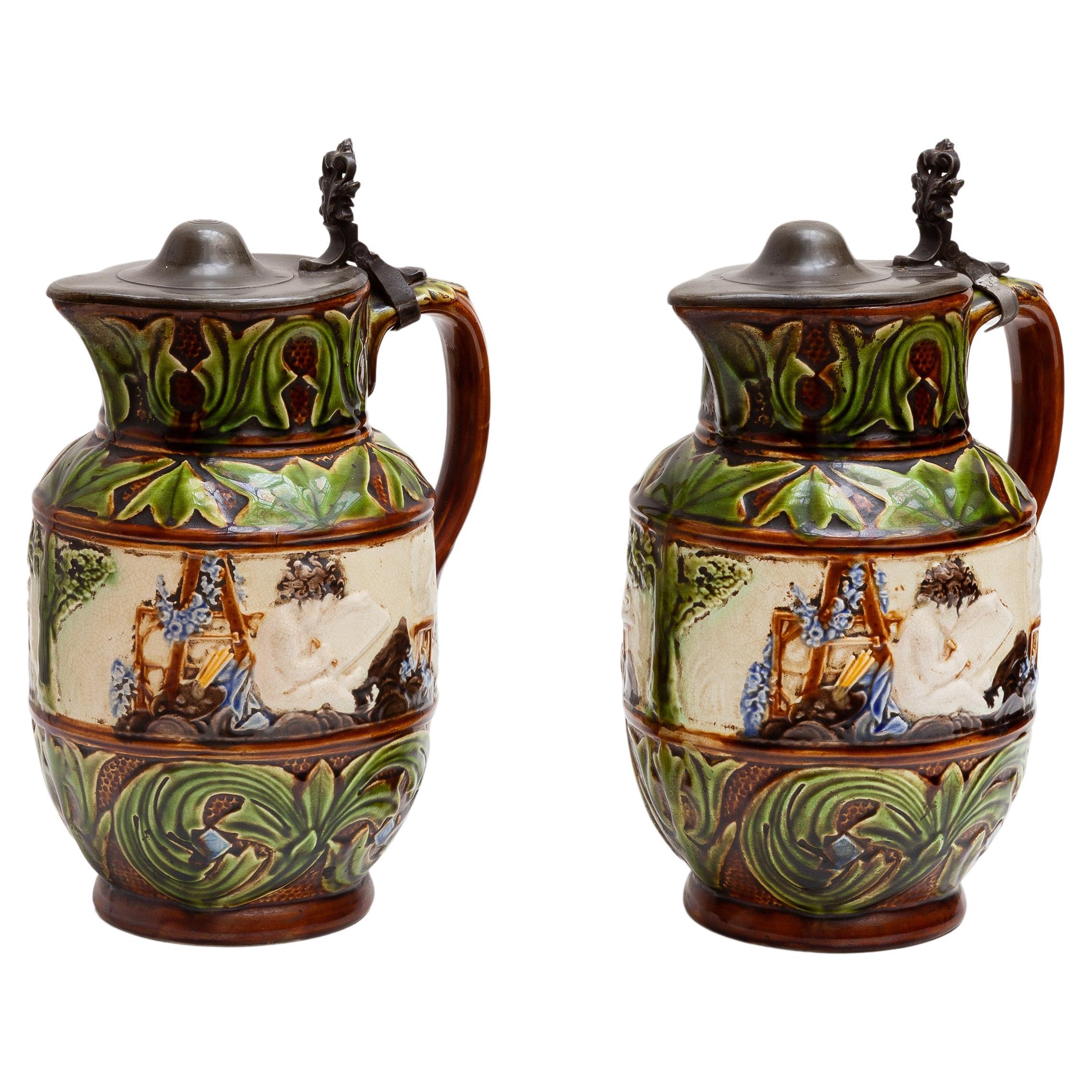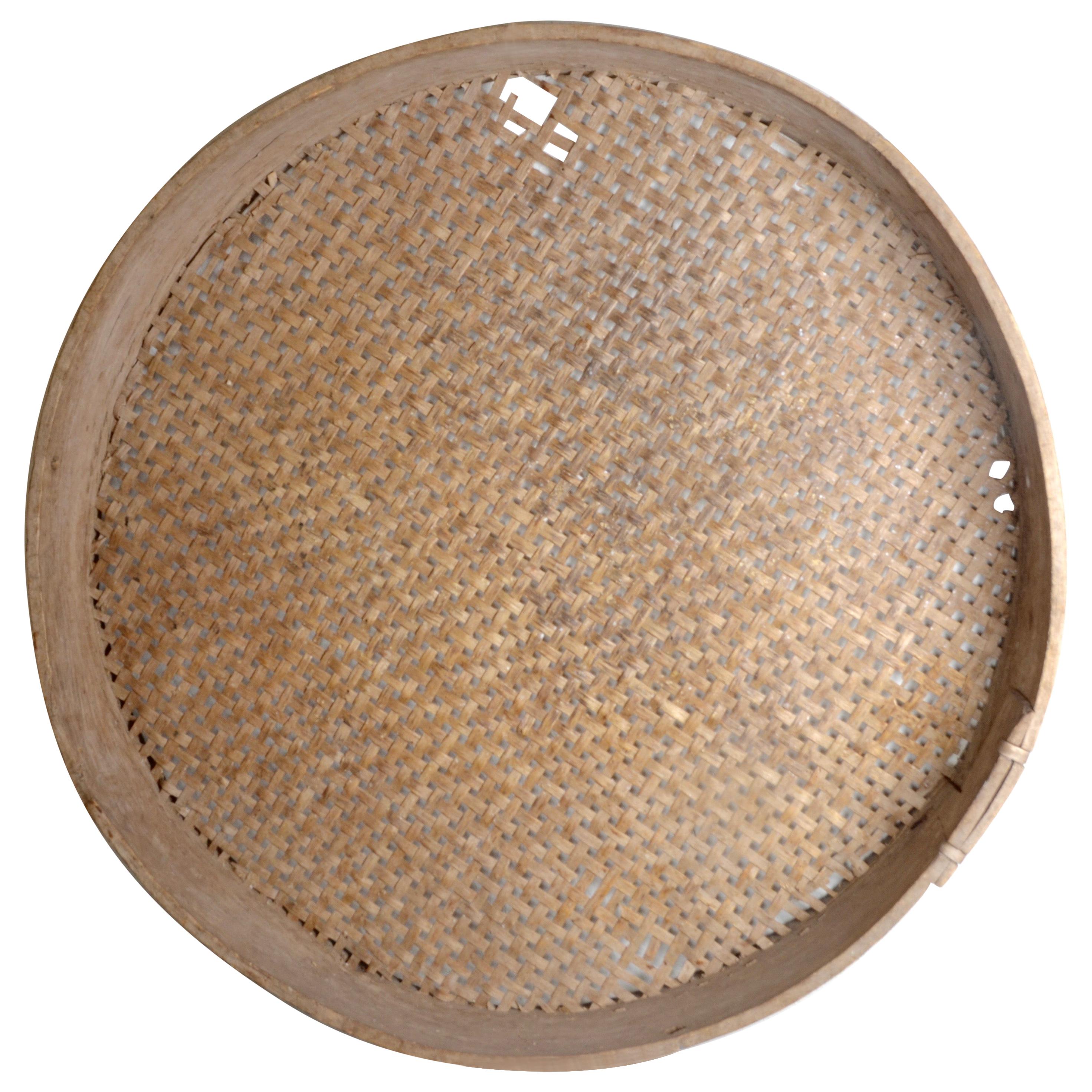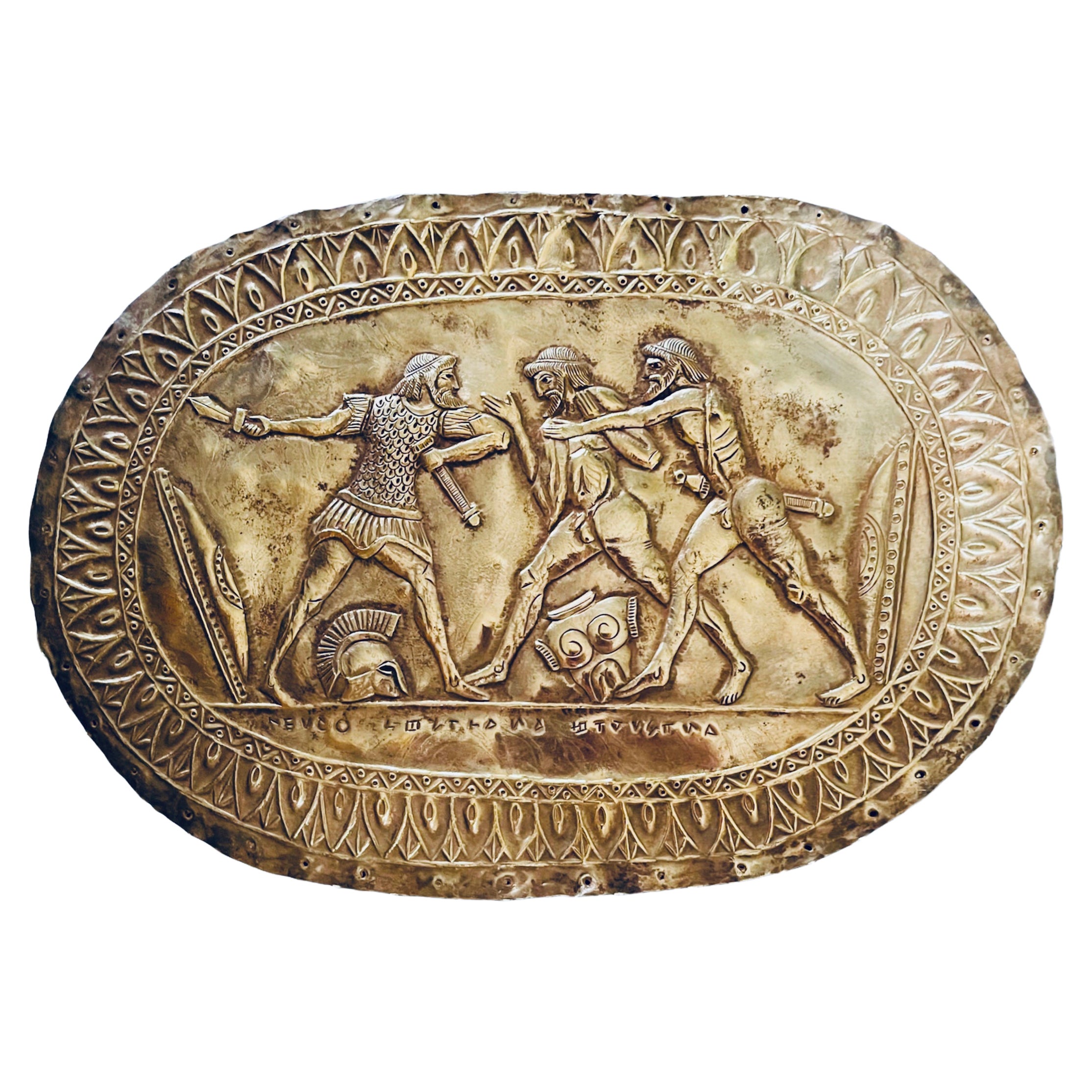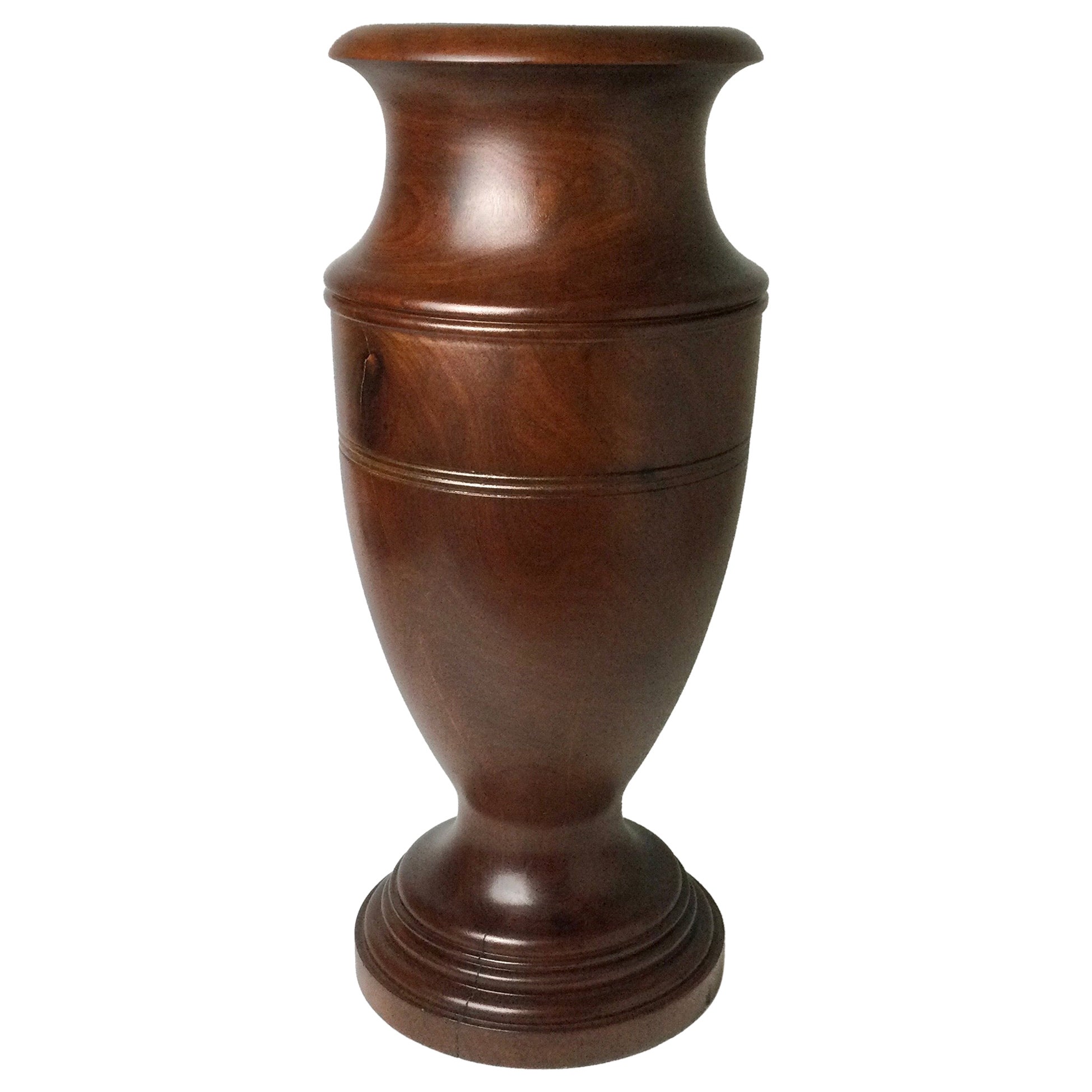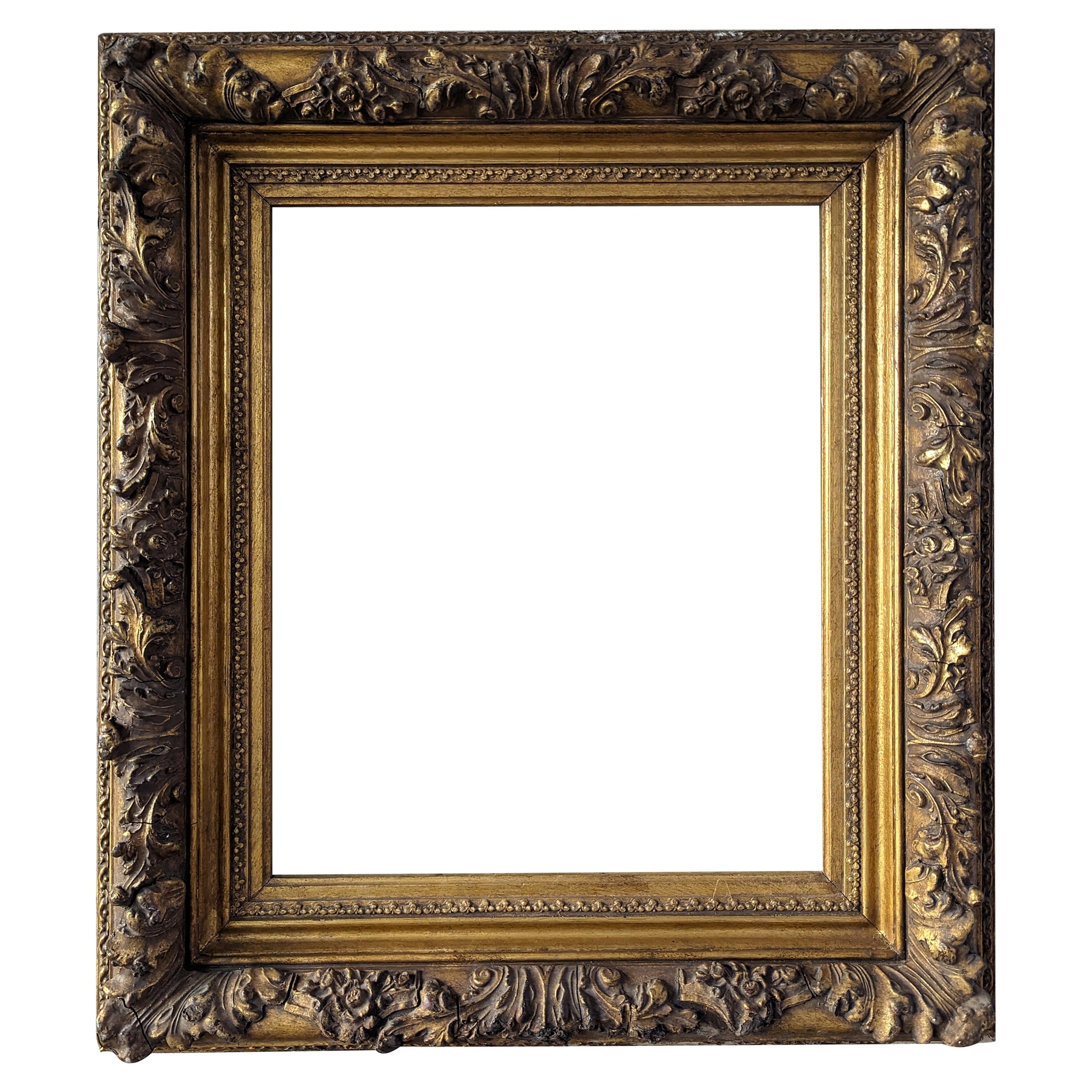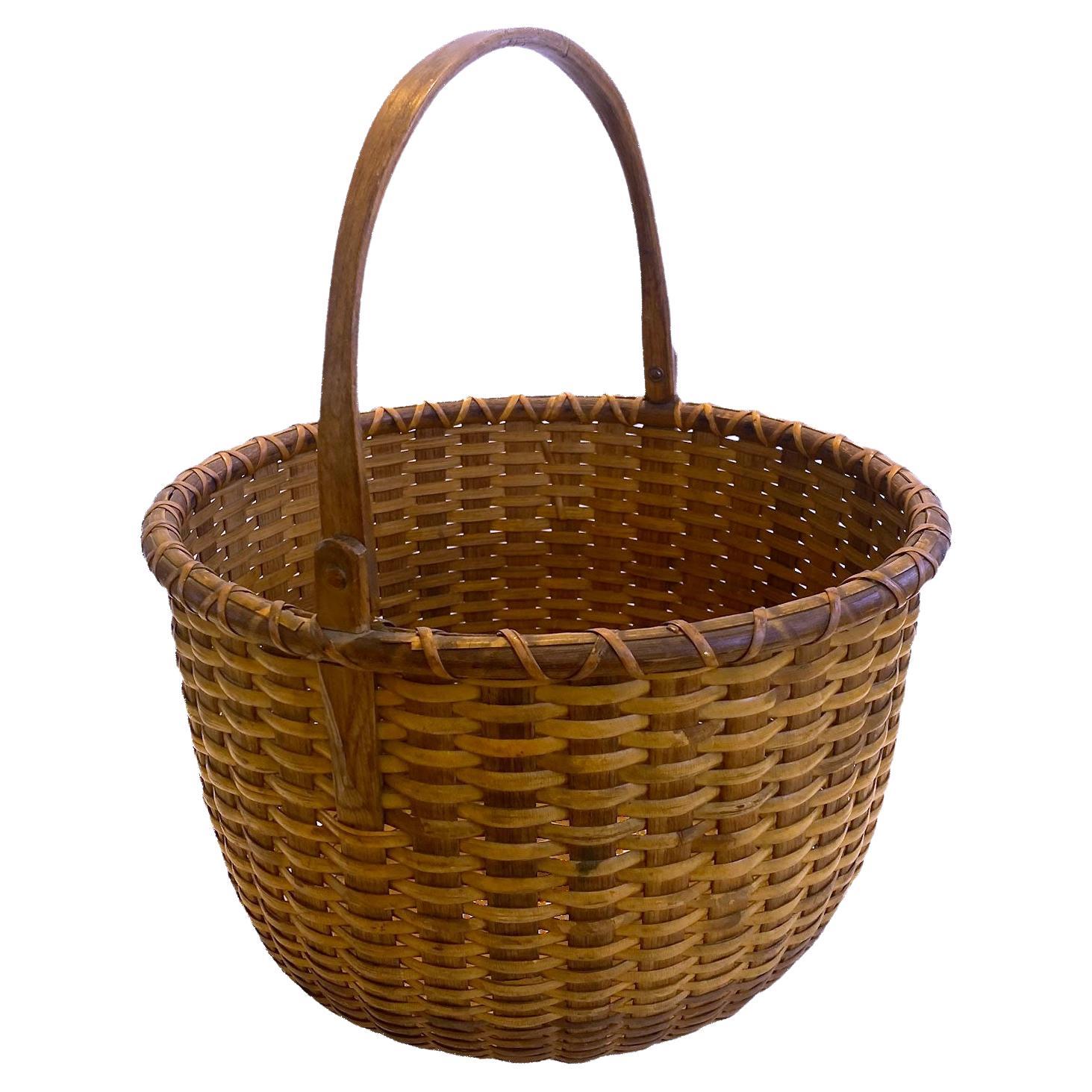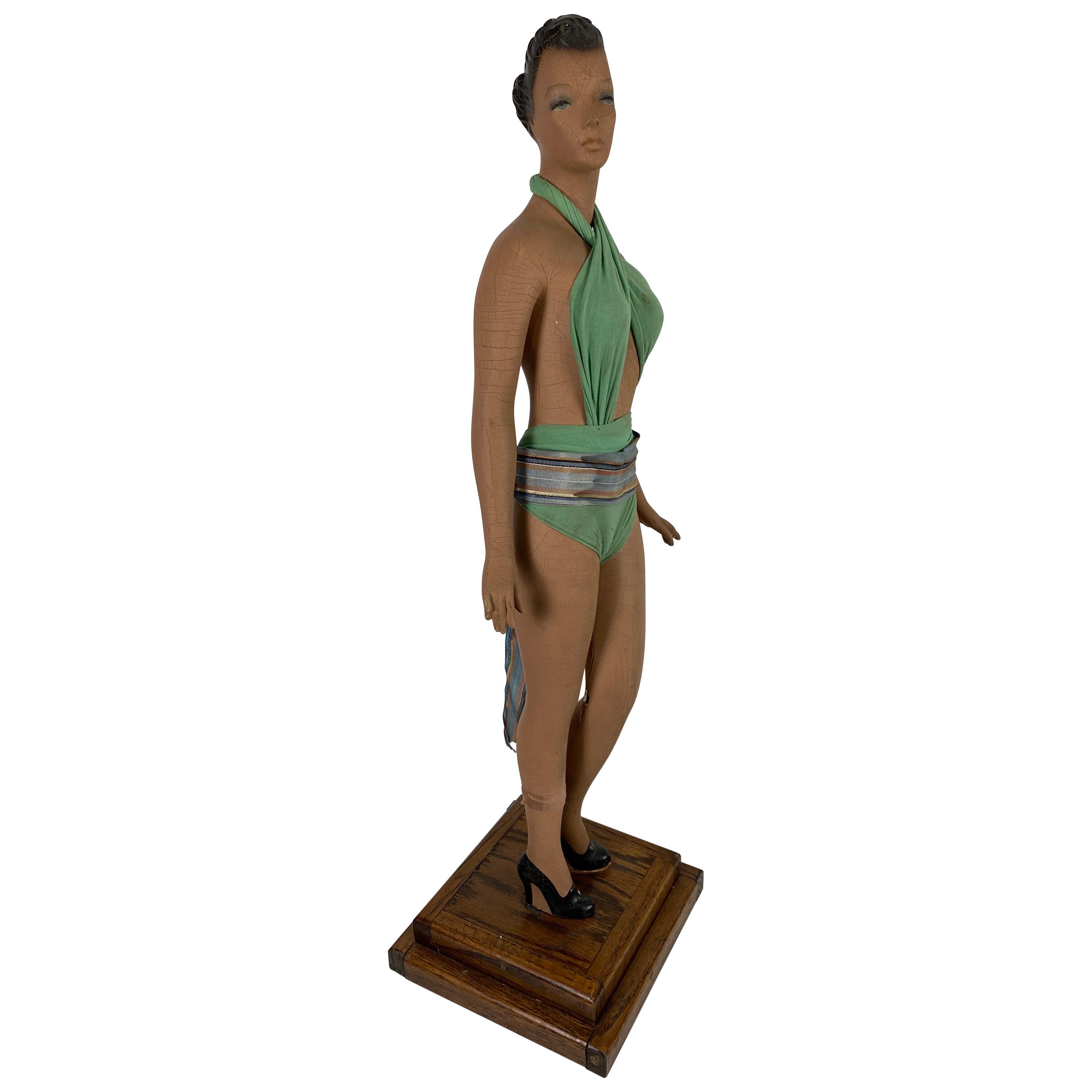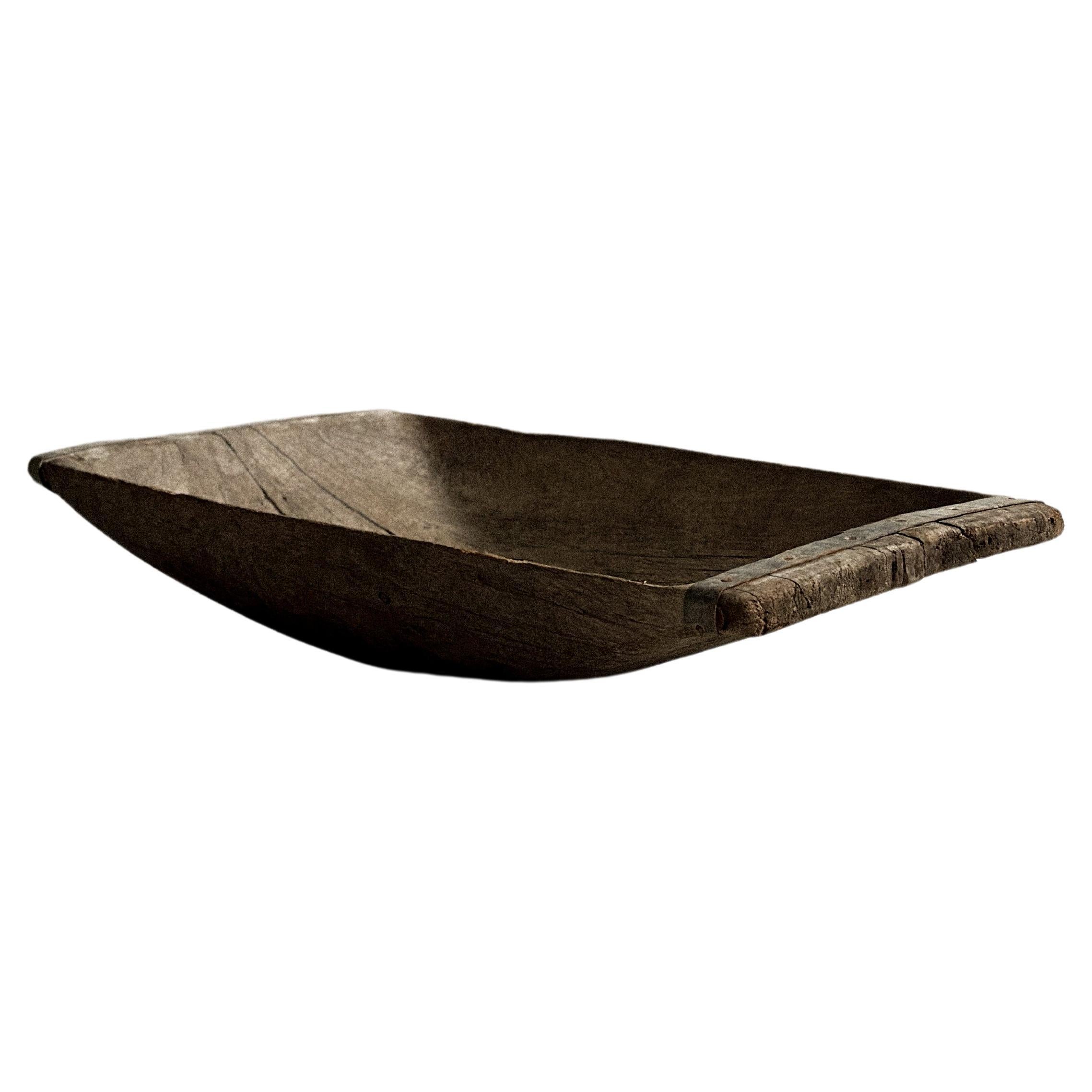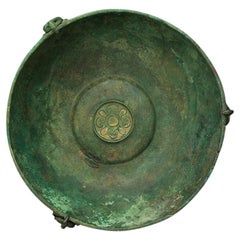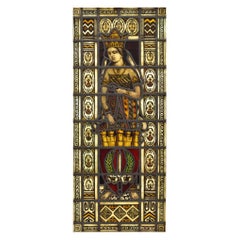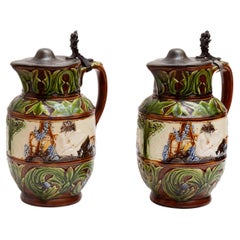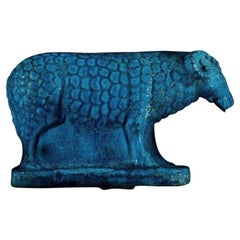
Large Faience Ram
View Similar Items
Want more images or videos?
Request additional images or videos from the seller
1 of 5
Large Faience Ram
About the Item
- Dimensions:Height: 10.52 in (26.7 cm)Width: 7.88 in (20 cm)Depth: 3.94 in (10 cm)
- Materials and Techniques:
- Place of Origin:
- Period:
- Date of Manufacture:1st-2nd Century A.D
- Condition:Repaired: in excellent condition with no restorations. Wear consistent with age and use. .
- Seller Location:London, GB
- Reference Number:1stDibs: LU5517223923392
About the Seller
5.0
Vetted Seller
These experienced sellers undergo a comprehensive evaluation by our team of in-house experts.
Established in 1910
1stDibs seller since 2020
More From This SellerView All
- Two Glass Inlay PairsLocated in London, GBTwo pairs of two halves from the same bar, finely detailed, with pointed ears and eyebrows, opaque yellow face, opaque red on the mouth, nose, eyes and ears, translucent cobalt blue edges to the mouth, nose and ears, with translucent emerald green leaves above and between the translucent cobalt blue brows and eye line, translucent pink pupils, with translucent cobalt blie and opaque white snake scales below the face, in translucent cobalt blue matrix, cut in the lower part of a cartouche design. These rare heads might represent the Agathos Daimon, the tutelary deity of Alexandria, who was also identified with Serapis, the male counterpart of Isis-Thermouthis (who in turn was a graecisized form of the early snake harvest goddess Renenutet). In a statue of Isis-Thermouthis in Alexandria museum (no. 25773, ex-collection King Farouk I), reproduced in Gotten, Pharaonen, no. 151, the snake goddess...Category
Antique 15th Century and Earlier Egyptian Antiquities
MaterialsGlass
$26,903 - Anglo-Saxon Hanging BowlLocated in London, GBA very rare and near-complete copper-alloy hanging bowl and associated fittings. Crafted from a single sheet of bronze, the body of the bowl is curved, with a slightly recessed lip. ...Category
Antique 15th Century and Earlier English Antiquities
MaterialsBronze
$102,195 - Megalithic StelaLocated in London, GBA tall anthropomorphic stele of carved granite, divided into two distinct regions of the body and face. The body is a single unarticulated block, but the facial features are outlined...Category
Antique 15th Century and Earlier European Antiquities
MaterialsGranite
$64,511 - Statuette of the Goddess NeithLocated in London, GBBronze statue of the goddess Neith, striding, her left foot extended forward. Her left hand is extended forward and formally held a papyrus sceptre, a fragmentary ankh is visible in her right hand. She wears a close-fitting sheath dress, incised with a broad usekh collar, and carefully engraved bracelets and armlets. On her head is the Red Crown of Lower Egypt, decorated with vertical striations and restored spiral and spire. Her face is finely molded, with a broad upturned nose and electrum-overlaid eyes and eyebrows. Neith was one of the earliest recorded gods in the Egyptian pantheon, worshipped from early in the Predynastic era through to the arrival of Roman rule. A war goddess and goddess of weaving, she was the patron goddess of the Red Crown of Lower Egypt and the city of Zau (Sais, in the 5th Nome of Lower Egypt) in the Delta. A powerful and popular goddess, she was, according to the Iunyt (Esna) cosmology, the creator of the world and the mother of the sun, Ra. This made her the mother of all of the gods, who often came to her to settle their disputes. Her symbols are the bow and arrows and a sword and shield as a war goddess, a weaving shuttle as a funerary goddess, and the Red Crown of Lower Egypt as the goddess of creation and mother goddess. She is usually depicted as a woman wearing the Red Crown of Lower Egypt, however, she is occasionally depicted as a cow in connection with her role as the mother of Ra. The use of electrum, a naturally occurring alloy of gold and silver sometimes called ‘green-gold’, for the eyes speaks to the high status of the object. Electrum had been used by the Egyptians since at least the 3rd millennium B.C., but, give its rarity, was reserved for the most expensive and important objects. Most electrum used in Egypt was imported from Nubia, though some was found there. Published: Parke-Bernet Galleries, New York, February 25th, 1971, no. 70, illus. Sotheby’s, New York, June 5th, 1999, no. 31, illus. David Aaron Ltd...Category
Antique 15th Century and Earlier Egyptian Egyptian Antiquities
MaterialsBronze
$127,872 - South Arabian Head of a WomanLocated in London, GBA female head finely carved from evenly-coloured cream alabaster. The face features a strong chin, high rounded cheekbones, and large elliptical eyes deeply inset for inlays. The remains of the nose indicate that it was long, thin, and roughly triangular in form. A small, round mouth sits just below the nose. Deeply incised eyebrows follow the shape of the eyes, which are framed by unusual grooved canthi on either side, possibly to represent cosmetic eye paint. The supraorbital margins above the eyes are deeply carved, while the carving below the eyes is more subtle, smoothing the sockets into the rounded cheeks. The ears are formed from two arcs and a central sphere, and both lobes are pierced for earrings. The long hair frames the face below the ears, and is carved to create a rougher texture. There is a stock sticker on the back of the neck. A fragment of the right shoulder remains. This suggests that the head was part of a larger sculpture, possibly a full figure (though this seems unlikely due to its relatively large scale) or, more likely, a bust. This head is stylistically aligned with those found at Timna, the capital of the ancient Yemeni kingdom of Qataban, which existed from the 1st millennium BC until the late 1st or 2nd centuries AD. Timna served as an important hub of the Incense Route, the camel caravan that transported incense from Arabia and India to ports on the Mediterranean Sea. Roman author and philosopher Pliny the Elder (23/24-79 AD) described Timna as a busy city with around 65 temples. Excavations in 1950 and 1951 by Wendell Phillips...Category
Antique 15th Century and Earlier European Antiquities
MaterialsAlabaster
$109,030 - Bronze HoardLocated in London, GBDagger L: 27.8 cm, Luniform bronze, possibly a belt buckle L: 10.8 cm, Shield-shaped bronze with a point Diam: 6.5 cm, Pommel Diam: 3.7 cm, Violin-bow brooch L: 17.5 cm, P-Shape...Category
Antique 15th Century and Earlier European Classical Roman Antiquities
MaterialsBronze
Price Upon Request
You May Also Like
- Leaded-Glass Window Picturing The Queen of the East, ca. 1899Located in Langweer, NLOriginal Antique Leaded-glass window depicting "Batavia, Queen of the East' & the Coat of Arms of Batavia, in wooden door, execution Atelier van Gebrand Glas 't Prinsenhof - Jan Scho...Category
Antique 1890s European Art Nouveau Antiquities
MaterialsLead
- Set of Two Majolica Jugs, Nimy Faiences Imperiale BelgiumBy Imperiale Royale, NIMYLocated in Antwerp, BEA set of 1851-1898 Belgium majolica pitchers, pottery jugs with pewter top.White hand painted cherubs sitting in a painting impression and accesso...Category
Antique 1890s French Art Nouveau Antiquities
MaterialsCeramic, Majolica
$290 Sale Price / item70% Off - Large Antique French Wood PliersLocated in West Palm Beach, FLLarge antique wood pliers. Great for reaching those hard to get places or a wonderful unique wall hanging.Category
Antique 19th Century French Antiquities
MaterialsPine
- Large Unique Sieve, Swedish Folk Art, 1800sLocated in Stockholm, SEExtraordinary sieve, diameter ca 120 cm. Swedish Folk Art / Allmoge, 1800s.Category
Antique 19th Century Swedish Folk Art Antiquities
MaterialsWood
- Rustic Large Folk Art Swedish Wood BowlLocated in Farsta, SEA big beautiful wooden bowl from 1900-century. It has a light soft color and a smooth surface, at one time long ago small house-mices has eaten a way on the side. This ads character...Category
Antique Late 19th Century Swedish Folk Art Antiquities
MaterialsBirch
- Large Greek Style Repousse Oval Metal PlaqueLocated in Guaynabo, PRThis is a large Greek style repousse oval metal plaque depicting a scene of a Spartan warrior trying to defend himself against two nudes warriors from another tribe. There are two shields standing at each side of them. There are also a Spartan helmet...Category
20th Century Greek Greek Revival Historical Memorabilia
MaterialsMetal

